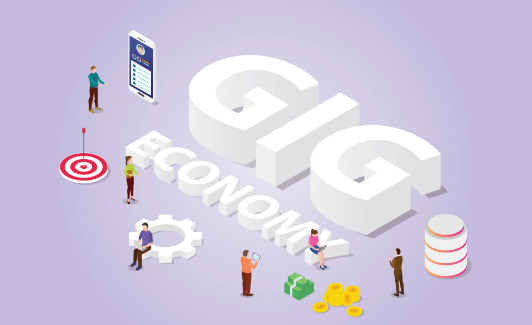Navigating the Changing Landscape Exploring Gig Economy Trends

The gig economy, characterized by short-term, flexible work arrangements, has undergone significant transformation in recent years. As technological advancements continue to reshape industries and redefine the nature of work, gig economy trends are evolving at a rapid pace. In this article, we will delve into the latest trends shaping the gig economy, from emerging platforms to shifting workforce dynamics, and examine the implications for both workers and businesses.
Platform Diversification
One notable trend in the gig economy is the diversification of platforms. While ride-sharing and food delivery services were among the pioneers, the gig economy has expanded to encompass a wide range of services. From freelance writing and graphic design to virtual assistance and online tutoring, workers now have access to a plethora of platforms catering to various skills and expertise.
Remote Gig Work
The rise of remote work has extended into the gig economy, allowing individuals to offer their services to clients and businesses worldwide without geographical limitations. Remote gig work offers flexibility and convenience, enabling workers to choose projects that align with their strengths and schedules.
Hybrid Models
A growing trend is the emergence of hybrid work models that blend traditional employment with gig work. Some businesses are incorporating gig workers into their operations alongside full-time employees, creating a dynamic and adaptable workforce that can scale based on demand.
Focus on Specialized Skills
As gig economy platforms become more specialized, there is an increasing demand for workers with niche skills. Freelancers who possess unique expertise or specialized knowledge are in high demand, allowing them to command higher rates and choose projects that align with their capabilities.
Emphasis on Flexibility and Autonomy
Flexibility remains a hallmark of the gig economy. Workers value the ability to set their own hours, choose projects, and determine their workload. The trend towards prioritizing autonomy and work-life balance is reshaping traditional notions of employment.
Worker Protections and Benefits
As the gig economy matures, there is a growing push for enhanced worker protections and benefits. Advocates and policymakers are addressing issues such as access to healthcare, retirement plans, and fair compensation for gig workers, highlighting the need for a more comprehensive safety net.
Upskilling and Training
To remain competitive in a rapidly evolving job market, gig economy workers are increasingly focusing on upskilling and continuous learning. Many workers invest in training to acquire new skills or improve existing ones, ensuring they remain relevant and competitive.
Alternative Work Arrangements
Some businesses are exploring alternative work arrangements that offer more stability to gig workers without full-time employment. Models such as “dependent contractor” or “third category” designations aim to provide certain benefits and protections to gig workers while maintaining their flexible status.
Conclusion
The gig economy is a dynamic and ever-evolving landscape that reflects the changing nature of work in the modern era. As trends continue to emerge and reshape the gig economy, both workers and businesses must remain adaptable and responsive to shifts in demand, technology, and workforce expectations. While the gig economy offers flexibility, autonomy, and opportunities for diverse income streams, it also raises important questions about worker protections, benefits, and the broader implications for the labor market. As the gig economy evolves, striking a balance between innovation and worker well-being will be crucial in shaping its future trajectory.
Read More: How to Groom a Dog With Long Hair?





